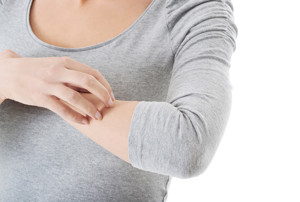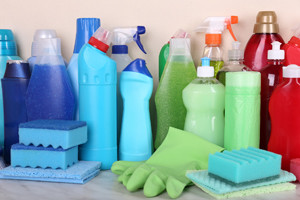
Some recent cases have appeared in Connecticut of children getting contact dermatitis from using baby wipes with a preservative called methylisothiazolinone (MI). Many of the ingredients used in household cleaning products can cause contact dermatitis if precautions aren’t followed or if you have an allergy.
What is Contact Dermatitis?
Contact dermatitis simply refers to an irritation of the skin that results in a rash caused by something that has come in contact with it. The rash can be categorized as either irritant or allergic. An irritant can be anything that causes an inflammatory reaction in your skin and this may be different between individuals. With allergic contact dermatitis, the body’s immune system will overreact to a foreign substance, which could be something that touches your skin or something you consume in food or medicine. The first time you are exposed to something that you are allergic to there will not be a rash, but instead your skin will become sensitized for the next time you are exposed. The rashes caused by both irritant and allergic contact dermatitis are not contagious and, although it can be very uncomfortable, it is usually not dangerous.
Some Tips for Dealing with Contact Dermatitis
-
- If the ingredients of a cleaner include toxic chemicals they will usually have labels like “DANGER”, “POISON”, or “USE IN A WELL VENTILATED AREA.” Gentle cleaners can also cause skin irritation though – especially if you have sensitive skin.
- When dealing with potentially irritating or dangerous household products always wear protective clothing and gloves to prevent skin contact. If you do experience a reaction, wash your skin with a mild fragrance-free soap.
- If the rash is very painful or is interfering with your daily activities you should see a dermatologist. In most cases contact dermatitis will clear up within a few weeks, but in some cases it is more severe and may require medical attention.

